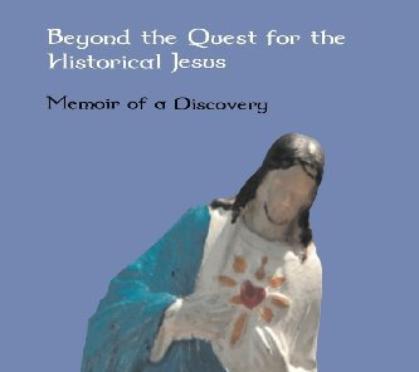 Dominican priest Thomas Brodie has written an autobiographical narrative of how he came to the realization that the New Testament writings about Jesus, in particular the Gospels, do not derive from reports about the life and teachings of an historical person at all but are entirely sourced and re-created from other theological writings. The Jesus of the Gospel narratives was created as a kind of parable or theological symbol.
Dominican priest Thomas Brodie has written an autobiographical narrative of how he came to the realization that the New Testament writings about Jesus, in particular the Gospels, do not derive from reports about the life and teachings of an historical person at all but are entirely sourced and re-created from other theological writings. The Jesus of the Gospel narratives was created as a kind of parable or theological symbol.
Eventually Brodie’s literary studies of the New Testament led him to go even further than realizing the Jesus narratives were entirely theological-literary creations. The same even had to be concluded of the persona behind the bulk of the New Testament epistles.
His book, Beyond the Quest for the Historical Jesus: Memoir of a Discovery, is a recounting of how his ideas developed and also of the lessons he learned along the way as he attempted to share and subject his research to independent scholarly criticism.
More, it is also a survey of the history of scholarly interpretations of the Bible, sweeping the reader through a panoramic view of how we got to where we are today with how we critically read the Bible.
Anyone not aware of Brodie’s background can learn a little more from my earlier posts in relation to Beyond the Quest. (Check the Index of Topics drop-down list in the right margin to see posts on other works by Brodie.)
Beyond the Quest is divided into five parts. Below are the intellectual themes of each part. These are narrated within the context of Brodie’s own life-experiences, exchanges with other (sometimes highly prominent) scholars, personal aspirations and challenges. He also reveals the background to each of his major publications.
- Part 1
- Learning the fundamentals of historical criticism. . . .
- Part 2
- Discovering literary sources of the Gospels
- Part 3
- Discovering the practices of the wider literary world and how they illuminated the New Testament writings in unexpected ways
- Part 4
- Grasping the first rule in historical inquiry (see my earlier post for an outline of Brodie’s chapter here), understanding the flaws in the oral tradition arguments (posts one, two, three, four detail his arguments from his earlier book), and the fate of Paul.
- Part 5
- What this means for Christian origins and for Christianity today.
The book concludes with an epilogue reviewing Bart Ehrman’s Did Jesus Exist?
In this post, Act 1, Scene 1, I’ll highlight the principle intellectual discoveries in Brodie’s early career as a student. These in themselves are well-known today among most readers with a critical interest in the Bible. They do not themselves directly lead to Brodie’s mythicist views. But we need to start at the beginning. There is much of Brodie’s own personal experiences that form the background to his education, and I encourage anyone interested to read his book to appreciate a little the personal odyssey this proved to be for Brodie. There is much of human interest as he relates his intellectual journey to his personal and wider social experiences.
And more than that, the reader will likewise begin to share Brodie’s learning and understanding of the sweep of critical biblical studies since the eighteenth century and even earlier.
Part 1
The First Revolution: Historical Investigations
Chapter 1
At one moment in his high school years Brodie was struck by the “extraordinary experience of depth and calm and truth” in Jesus’ farewell speech in the Gospel of John. He went on to learn by heart that entire Gospel.
One day an older Dominican remarked casually that the words of Jesus in the Gospels were not necessarily the exact words Jesus spoke. Brodie describes the slightly disheartening feeling that probably many other young believers have felt on first learning this.
But that is the sort of stuff most of us go through in our teen years. We learn to understand more the ways of the world, accept reality, and move on with faith unshaken or even cemented.
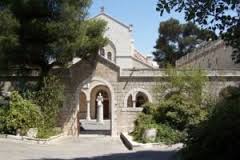
Then in the 1960s Brodie was taught in the tradition of Jerusalem’s Dominican-run biblical school, Ecole Biblique, a school that emphasized history and archaeology. Here is where Brodie was introduced to the historical-critical method.
“Historical” means trying to establish the facts.
The process is like that of a wise court-room where the facts of a case are in doubt, or of a calm history department in a university. The various biblical accounts of an event or life are examined individually, compared with one another, and compared also with other accounts or with other pertinent evidence. (p. 4)
Example. The Book of Jonah. “It seems highly unlikely” that anyone could survive being swallowed by a sea creature for three days and nights. But let’s suppose God sent a survival capsule to make that possible. We still have the (conceptually greater) problem of the inhabitants of the capital of the Assyrian empire collectively falling on their knees in repentance at the words of Jonah. This is
like an account of the 1950s conversion of Moscow, capital of the Soviet Union . . . . All the available historical evidence indicates that it never happened. (p. 5)
But biblical scholars speak of history Plus. That is, of “historical-critical” methods. Why the “critical” tag? When I studied the history of the ancient and medieval worlds and of modern nations and systems I always thought I was doing simple ‘history’. Not so in Biblical scholarship. Brodie rightly explains:
‘Critical’ is added because historical investigation needs help. . . . [Biblical] historical method then has various allies, various helpful ‘criticisms’ [viz. from the department of theology, of from the department of literature, or of archaeology. . . ] (p. 5, my emphasis)
And of those helps two were supreme:
- the search for the sources to the documents in hand
- archaeology
The Bible’s Early Engagement with Literary Studies
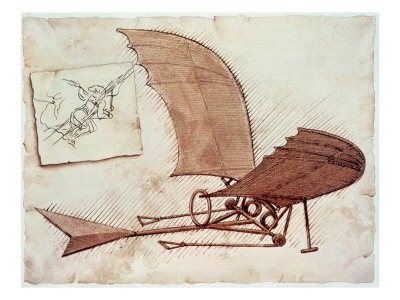 It has taken a long time for biblical studies to find a way to work harmoniously with literary studies. Both are concerned with how books are written so one would expect the two to be natural allies, but that’s not what has happened from the mid-eighteenth to the mid-twentieth centuries.
It has taken a long time for biblical studies to find a way to work harmoniously with literary studies. Both are concerned with how books are written so one would expect the two to be natural allies, but that’s not what has happened from the mid-eighteenth to the mid-twentieth centuries.
Brodie compares this situation to Leonardo’s flying machines — he developed some of the concepts for flight but could never complete the process to create a real flying machine. Partnership with the right concepts eluded him.
Tertullian denied outright that Jerusalem had anything to do with Athens, and that included reading the Greek works of the New Testament with the aid of the tools and traditions of secular Hellenistic literature. Bultmann flatly declared the Synoptic Gospels to be unliterary. So that killed off any incentive to understand them in their original literary contexts.
The Bible was generally regarded as a book of history, a history book, with a theological message. Literary study seemed to many to be relatively unimportant.
Nonetheless, two questions were prominent:
- What were the sources used by the authors of the biblical books?
- What was the nature, or genre, of the books of the bible, and how were their different parts composed?
That second question is crucial. It is fundamental to knowing how to interpret everything we read and hear. Is a tough statement a threat or a joke? Is a story fiction or non-fiction?
Searching for sources
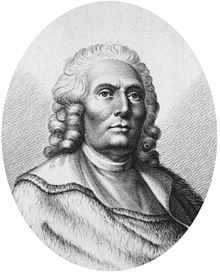
Brodie starts at the beginning of “modern” biblical scholarship with the first scholar, a French medical doctor of the Versailles court and professor at the University of Paris, Jean Astruc, to suggest that the author of the Pentateuch used sources. By doing so he was
- proposing an explanation for the contradictions in the books
- identifying different sources used for their composition (even though now lost)
- and most important of all, saving the honour of Moses as the author of them all — he used sources and allowed their diversities to remain.
But Astruc knew he was deep in dangerous intellectual waters. He only published his book in his seventieth year, in 1753, and without his name appearing on it, and ostensibly through a publisher outside France. Three times in the title and subtitle he used the diffident “conjectures”.
The revolution had begun. Scholars began to interpret every tension and contradiction in the texts as evidence of different sources.
The Pentateuch was falling into hundreds of sources, and two things were being lost: the unity of the actual books (Genesis to Deuteronomy); and the underlying history — the history of Moses and Israel. (p. 7)
Julius Wellhausen arrived in the 1870s to impose some order on this chaos with his conclusion that there were four sources behind the Pentateuch. This was the beginning of the Documentary Hypothesis.
Brodie comments:
The work of Astruc, Wellhausen and their followers was a bold effort to identify sources — and it did in fact identify real features of the narrative — but it was not a reliable indicator of specific sources. It was not possible, on the basis of just one text, to subdivide that text into lost sources. The process was out of control, and proved not to be a reliable ally. (p. 8 — a search on Documentary Hypothesis on this blog will bring up several posts dealing with more recent challenges to the Documentary Hypothesis.)
Searching for art and form
 Brodie compares the identifying forms of literature with bird-watching.
Brodie compares the identifying forms of literature with bird-watching.
An area may have many diverse birds, but if you can identify the nature/form/genre of a particular bird you many well be able to say where it has come from. The form is a clue to the history. In biblical studies the process became known as form-history . . . often called ‘form criticism’. (p. 9)
The pioneer in highlighting the importance of understanding a book’s nature/kind/genre/Gattung was German folklorist and biblical scholar Hermann Gunkel.
By the 1960s the importance of understanding the literary form of a book was well established.
“We have a problem on our hands, if the book of Jonah is a historical book. This problem vanishes when the book is taken for what it really is, a work of fiction. . . .”
Though the principle is understood, its application has not always been followed consistently. The form of the New Testament books is, for most part, still “surprisingly elusive”. Are the Gospels and Acts history, biography, fiction, or something else? Are the other twenty-one documents letters (spontaneous addresses to specific situations) or epistles (studied compositions, like essays)?
To understand the form of a book requires us to some extent to understand its general background. Do the stories in Genesis derive from folklore transmitted through oral traditions or do they derive from literary craft, being assembled in a deliberate way in accordance with principles shared in the wider literary world?
Gunkel argued that the Genesis stories derived from the former, folklore strongly influenced by oral traditions.
For Gunkel, history-writing was a sophisticated art that was not known among uncultured peoples. Uncultured peoples had limited attention spans and dealt mostly with the oral tellings of short episodes of folklore.
So the various short episodes of Genesis were interpreted not as integral parts of developed literature, but as loose-fitting elements, like diverse folkloric episodes that came from diverse situations in life. And, as in folklore, he believed that if he could identify the form, the precise kind of episode, he would be able to trace the history behind it. (p. 9)
Sometimes the forms of specific episodes could be identified, but it was much more difficult (“far more than with birds”) to identify their provenance.
And meanwhile the literary form of entire biblical books remained obscure.
The Gospel of John was a special problem. Brodie’s “gut feeling said it was deeply true” but then one had to ask why it was so different from the other gospels. And what sort of writing were the gospels? History? Or history of a special kind? And how to explain John?
What was clear in Brodie’s mind was that while literary study was sometimes appealed to for help by biblical scholars, as a rule it was left largely unexplored.
Archaeology
Archaeology of the Middle East was meanwhile galloping ahead. The lands of the Bible were being recovered literally. (Eventually there would be material or external controls against which to read the Bible’s books.)
.
Chapter 2
The next phase of Brodie’s learning came when he was sent to teach in Trinidad.
As a teacher he felt compelled to advance his own studies: Wellhausen, Gunkel, Bultmann, de Vaux, Albright, Bright, Benoit, Dodd, Raymond Brown. Particular help was found in the Jerome Biblical Commentary edited by Raymond Brown, Joseph Fitzmyer and Roland Murphy.
Two Cities
Amid the complex discussions about historical facts I realized as never before that trying to say something about the interpretation of the Bible and its history has always been partly a tale of two cities, each located about 300 miles from Jerusalem: symbolic Alexandria, and literal Antioch. (p. 13)
Alexandria – symbolic
Alexandria had a strong Jewish population and was a leader in biblical interpretative scholarship. It is renowned as being the key location for the creation of the Greek “Old Testament”, the Septuagint. It was also the city from where leading allegorical studies emanated. Philo is the most well-known. The Bible’s stories were, to him, spiritual symbols. Then there were the highly influential Clement and Origen to embraced the allegorical principle of interpretation as Christian scholars.
Brodie might also have mentioned the Nag Hammadi texts found in Egypt.
Antioch — literal
Antioch had a checkered history in relation to Jerusalem and Jews, but to jump to biblical interpretations, we note that this was where Paul says he had his confrontation with Peter; where the disciples were said to be first called Christians; and where Ignatius was renowned as bishop. . .
and, above all, a place which developed a tradition of interpretation that, in comparison with Alexandria, was generally more literal. This literal tradition, which was later than that of Alexandria, was inspired especially by Lucian, head of Antioch’s theology school until he was martyred in 312, and was developed by others, including Diodorus of Tarsus, Theodore of Mopsuestia, and to some degree, John Chrysostom — all of whom died around 400.(p. 15)
‘Islands . . . [that] did not survive’
The significant point for Brodie was that at the origin of Christianity there were two competing ways of interpreting scriptures: symbolic or literal. Sometimes the two approaches were interwoven. St Augustine, for example, managed to interpret the Bible both ways. Meanwhile in southern France John Cassian distinguished four different senses of scripture. Jerusalem, for example, had four different meanings:
- Literal: the actual city
- Allegorical: the church
- Moral: the individual’s soul
- Final (or eschatological): the heavenly city.
Three of these four are symbolic. Throughout the Middle Ages the allegorical reading often dominated through the influence of such figures as Eckhart, John Gerson and Denis the Carthusian.
Philip R. Davies (departing here from Brodie’s chapter) has also identified at least ten different meanings of the word “Israel” in the Old Testament portion of the Bible:
- the name of the ancestor Jacob
- the name of the league of 12 tribes
- the name of a united kingdom whose capital was Jerusalem
- the name of the northern kingdom whose capital was Samaria (after the above kingdom broke up)
- after 722 BCE, another name for Judah
- after the exile into Babylon, another name for the socio-religious community in left in the province of Yehud
- the name of a group within this community, the laity (as distinct from ‘Aaron’)
- the name for the descendants of Jacob/Israel
- a pre-monarchic tribal grouping in Ephraim
- adherants of various forms of Hebrew and Old Testament religion.
The 1500s and All That
Brodie sees a sudden shift from the primacy of symbolic interpretation of the Bible to a literal one around the 1500s.
This was the era of Columbus, of Copernicus, of Luther and Ignatius Loyola. Copernicus and Galileo defied the word of God and shifted the locations of the earth and sun.
Luther’s challenge to the authority of the Papacy was especially critical. In place of the Pope he exalted a new authority: the Bible itself.
And for Luther the meaning of the Bible was clear. It was the literal meaning that was the word of God.
The Pope was challenged, then, not to decide how the sun and earth really moved or didn’t move, but to affirm just as surely as Luther the truth of the Bible, which meant asserting its literal meaning.
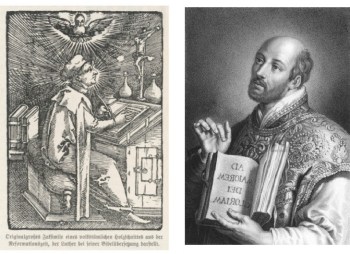
So both the Papacy and the Reformers were drawn into defending the literal truth of the Bible.
And the general development of historical studies which occurred around that time pushed the literal meaning further towards the historical, the factual.
Years later, in 2010, I heard Ernan McMullin, a vastly experienced professor from Notre Dame University, summarize the shift of interpretation in two short sentences: ‘The Reform shifted interpretation from symbolic to literal. And the Catholics said: ‘If you go literal, we’ll outdo you”‘. (p. 16 — this brings us back to my other ongoing series on Nineham’s Use and Abuse of the Bible.)
Thus the emphasis fell increasingly on the events behind the Bible rather than on the pages of the Bible itself. And these events were increasingly in need of proving.
Until around 1500 the Church, Brodie tells us, generally allowed a fair degree of freedom to question and challenge. But the Reformation ended that. The Reformers were seen as having abused that relative freedom and in reaction the Church began to expect complete obedience. (We know the Jesuits played a significant role in this change.)
More Trouble-makers
The problem raised by Copernicus and Galileo about the positions of the sun and earth could be easily deflected. One merely had to say that the real theme of Genesis was in arguing God was the originator of all things, so throwing out the literal meaning of Genesis 1 didn’t matter much.
But other problems were to arise. In the 1650s Bishop James Usher had appeared to have once and for all resolved the questions of chronology and dating in the Bible. Meticulous calculations established creation in 4004 BCE.
Then in 1795 James Hutton argued before the Royal Society of Edinburgh that erosion and rock formations meant that the earth must be much older than that. 1830 and Charles Lyell argued for slow geological changes that were still taking place. By the end of the nineteenth century the argument was over whether the earth was somewhere between 100,000 and billions of years old. Usher’s date was fast being eroded into dust.
Next, of course, was Darwin‘s Origin of Species, and the emergence of plants and animals were no longer as Genesis described.
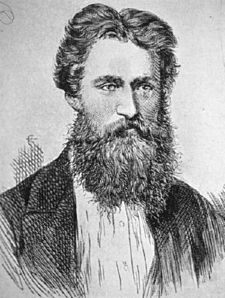
In 1872 a printer’s engraver from Chelsea, George Smith, was given an opportunity to share the results of his studies in ancient Assyria and Mesopotamian literature, and argued before an audience new to the topic, including Prime Minister Gladstone, that the story of Noah’s Flood was not an original narrative but could be traced back to the Epic of Gilgamesh.
These ideas were revolutionary. They opened up the possibility of asking an even more challenging question: Were Adam and Eve real or only symbols?
Pope Leo XIII declared the literal interpretation of Genesis 1 to 3 was still valid.
The people of Tennessee passed the Butler Act forbidding the teaching of evolution. We know the outcome of that: the famous Scopes Trial (or “Monkey Trial”).
Then in 1948 the Roman Church allowed the symbolic interpretation of Adam and Eve.
But more walls were yet to fall . . . .
Neil Godfrey
Latest posts by Neil Godfrey (see all)
- Samaria in the Persian Period - 2024-04-15 11:49:57 GMT+0000
- No Evidence Jerusalem/Judea had a “Writing Culture” in Persian times — Israel Finkelstein - 2024-04-12 09:45:34 GMT+0000
- Questioning the Hellenistic Date for the Hebrew Bible — continuing - 2024-04-11 20:54:16 GMT+0000
If you enjoyed this post, please consider donating to Vridar. Thanks!

8 thoughts on “The Making of a Mythicist, Act 1, Scene 1 (Thomas Brodie’s Odyssey)”